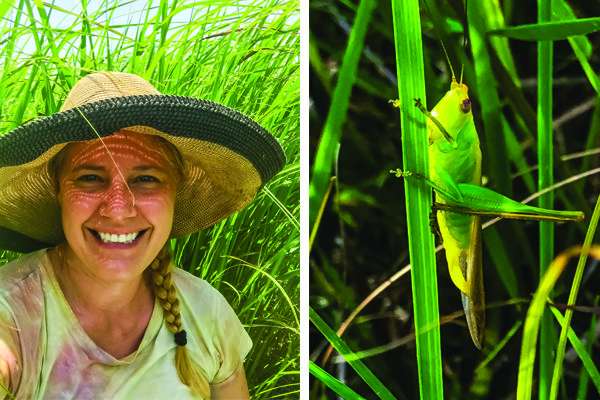Credit: University of Dayton
Salt may play a key role in thriving grasshopper, locust and other bug populations that can cause close to a billion dollars in damage to crops annually when left unchecked, according to new research led by University of Dayton ecologist Chelse Prather.
These insects were more abundant and diverse when they had access to sodium along with commonly found "macronutrients" like nitrogen and phosphorus, according to the study, which the National Science Foundation funded and peer-reviewed journal Ecology Letters published in its current issue.
"Ranchers and farmers can lose nearly $1 billion of profits each year to grasshopper eating plants,and spend more in pesticides to control these insects" said Prather, assistant professor of biology. "But current agricultural practices might actually be giving these insects exactly what they need for their population to grow, which is not part of a smart management strategy."
Nitrogen and phosphorus are commonly found in fertilizers, and salt is often contained in the water used to support crops, Prather explained. In the study, that combination allowed insect populations to be 60 percent larger, with 15 percent more species and 20 percent higher diversity, which is the chance that two randomly selected bugs would be the same species.
The study, which took place in a Texas coastal prairie, was the first to manipulate macronutrients and micronutrients in soil on a large scale.
"Scientists are only beginning to study how micronutrients affect insects," Prather said. "Insects are an important part of the grassland ecosystem, eating plants and serving as fodder for other animals. But large populations of insects can also be damaging, so it's important for us to understand how the availability of things like sodium allow these organisms to flourish if we're going to better predict their outbreaks."
More information: Chelse M. Prather et al. Seeking salt: herbivorous prairie insects can be co-limited by macronutrients and sodium, Ecology Letters (2018). DOI: 10.1111/ele.13127
Journal information: Ecology Letters
Provided by University of Dayton
























